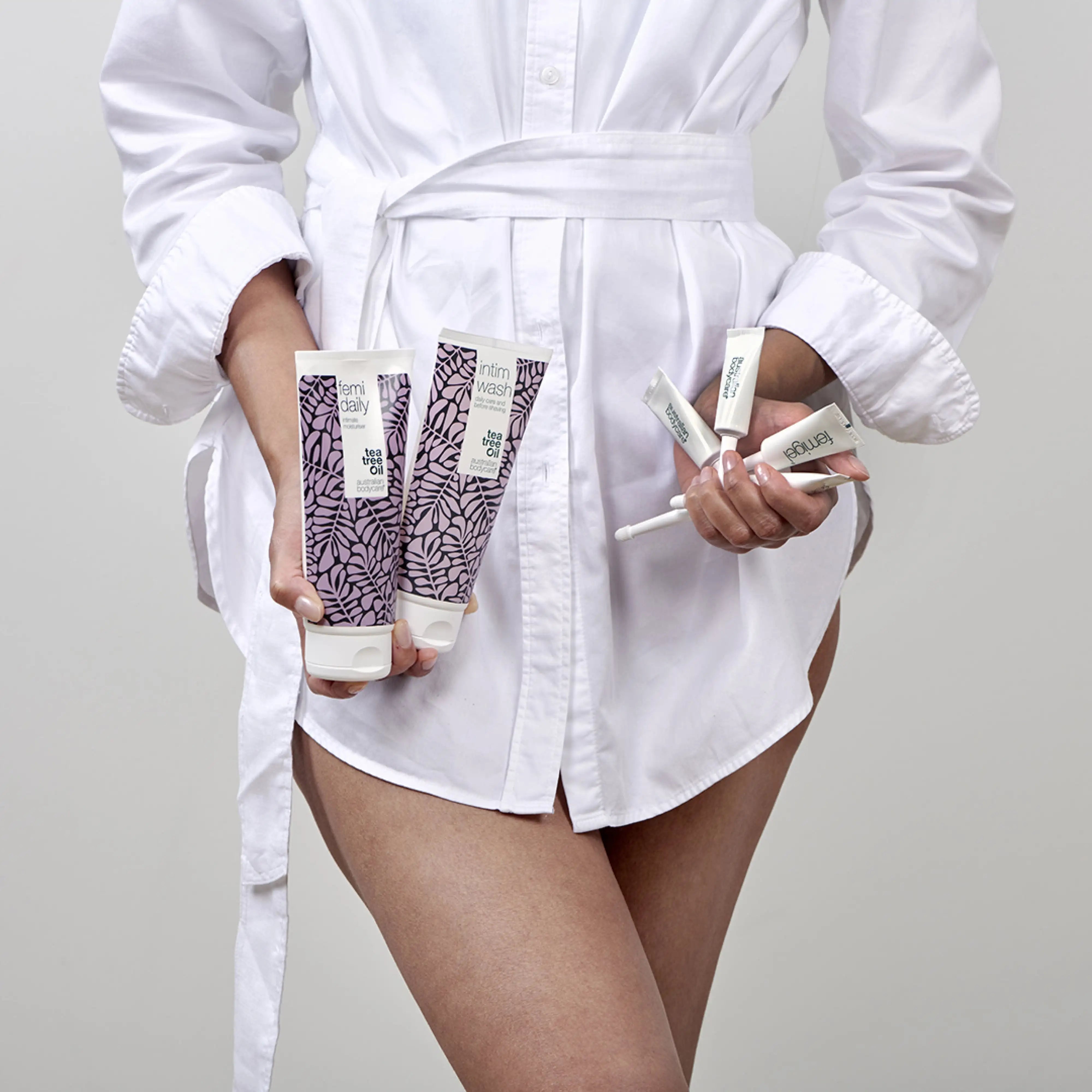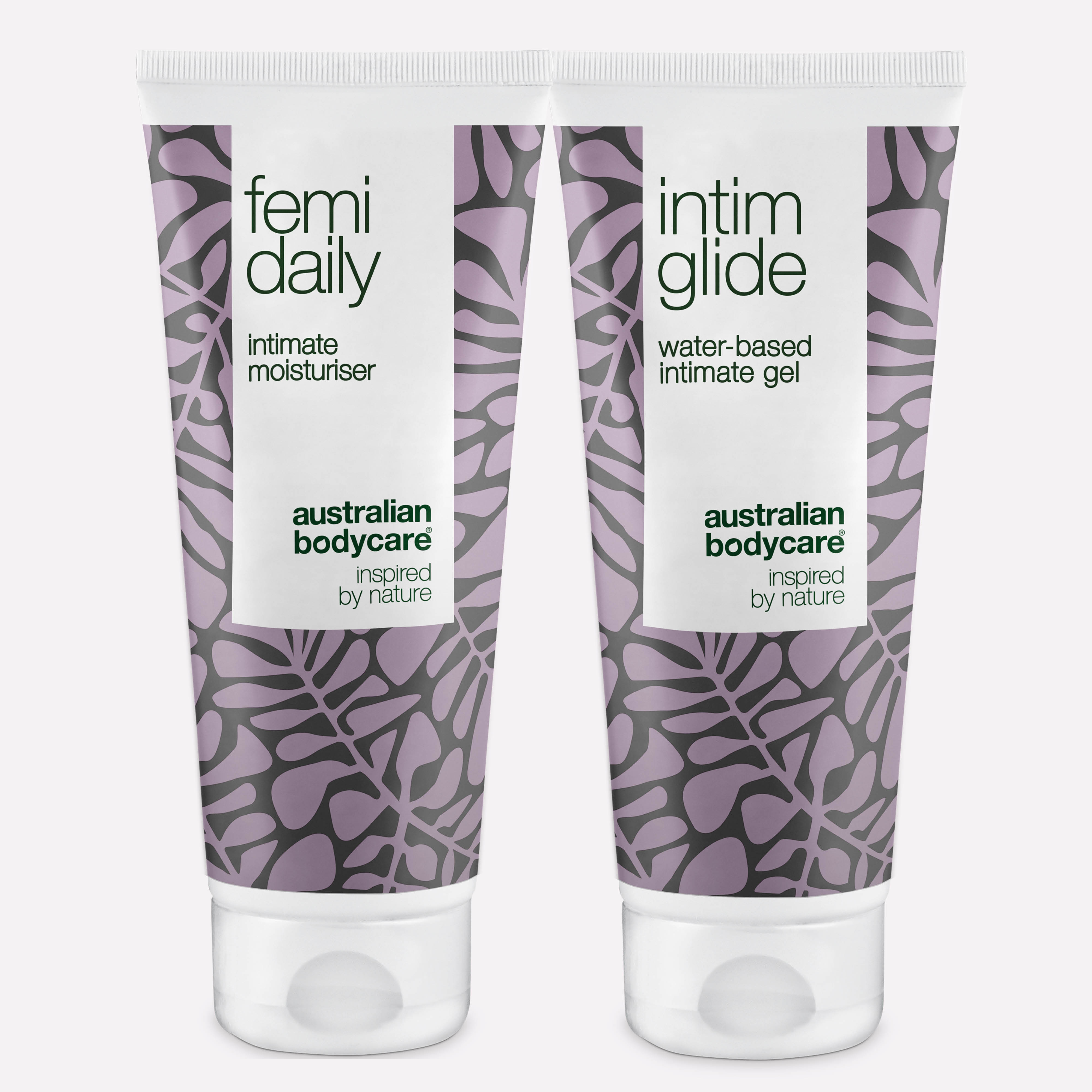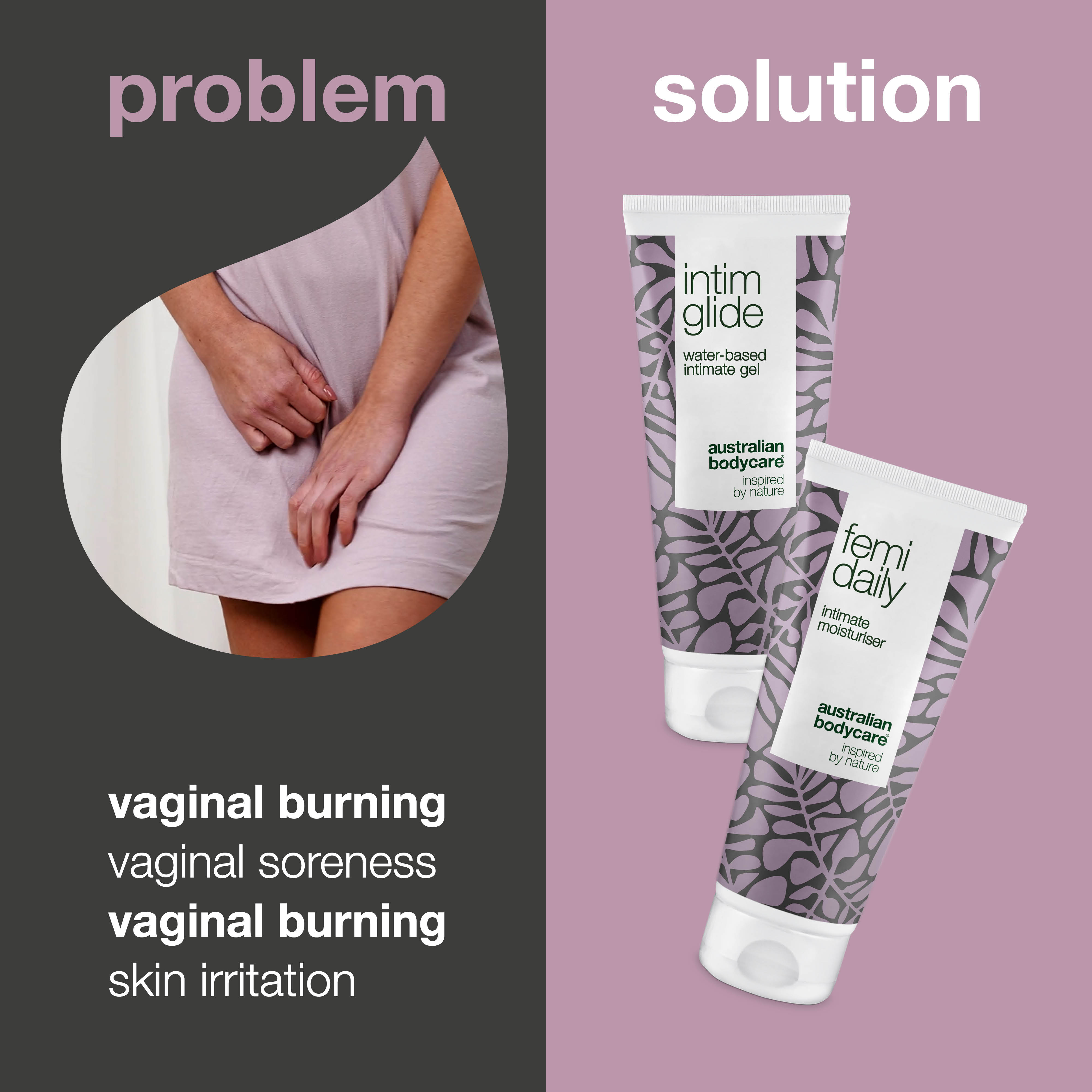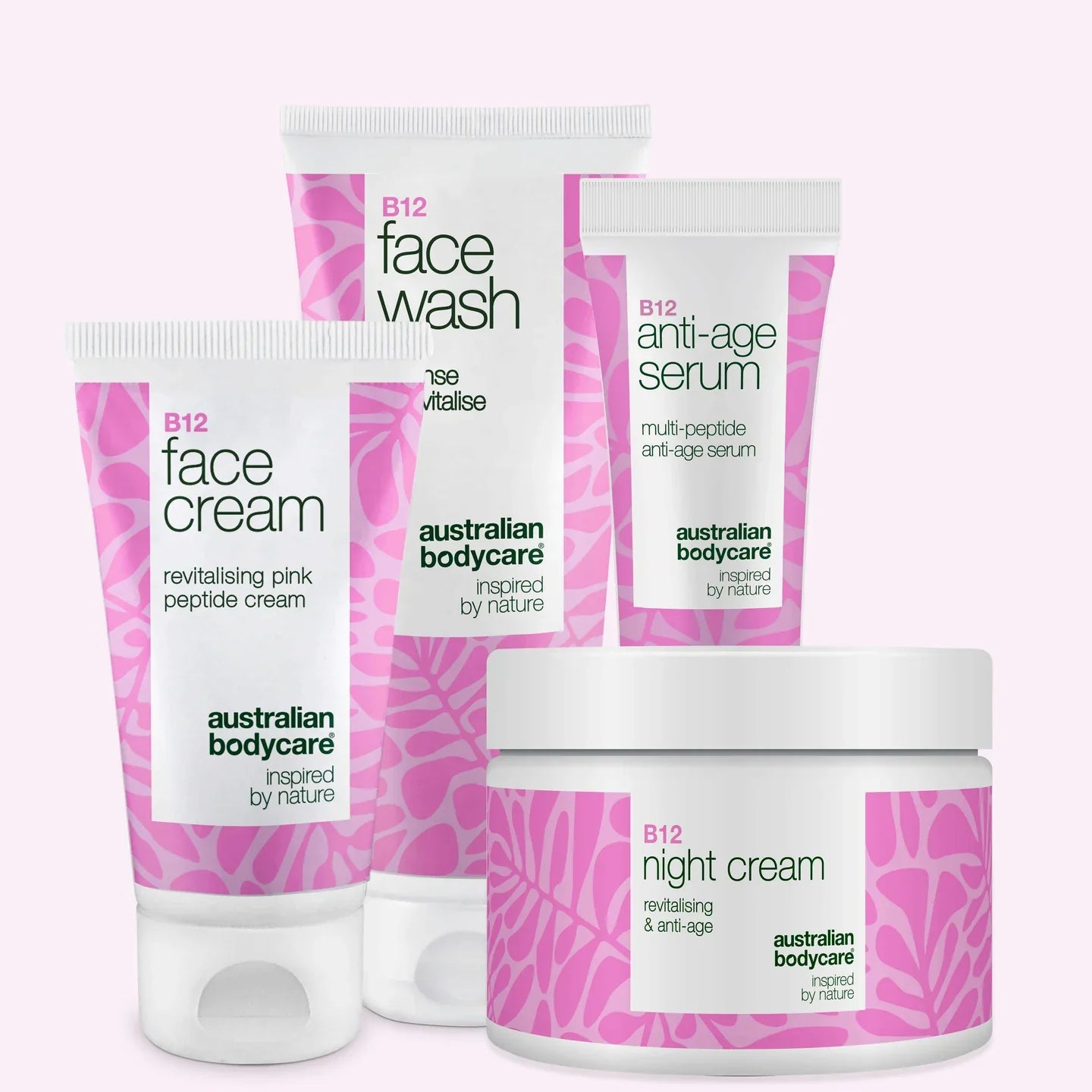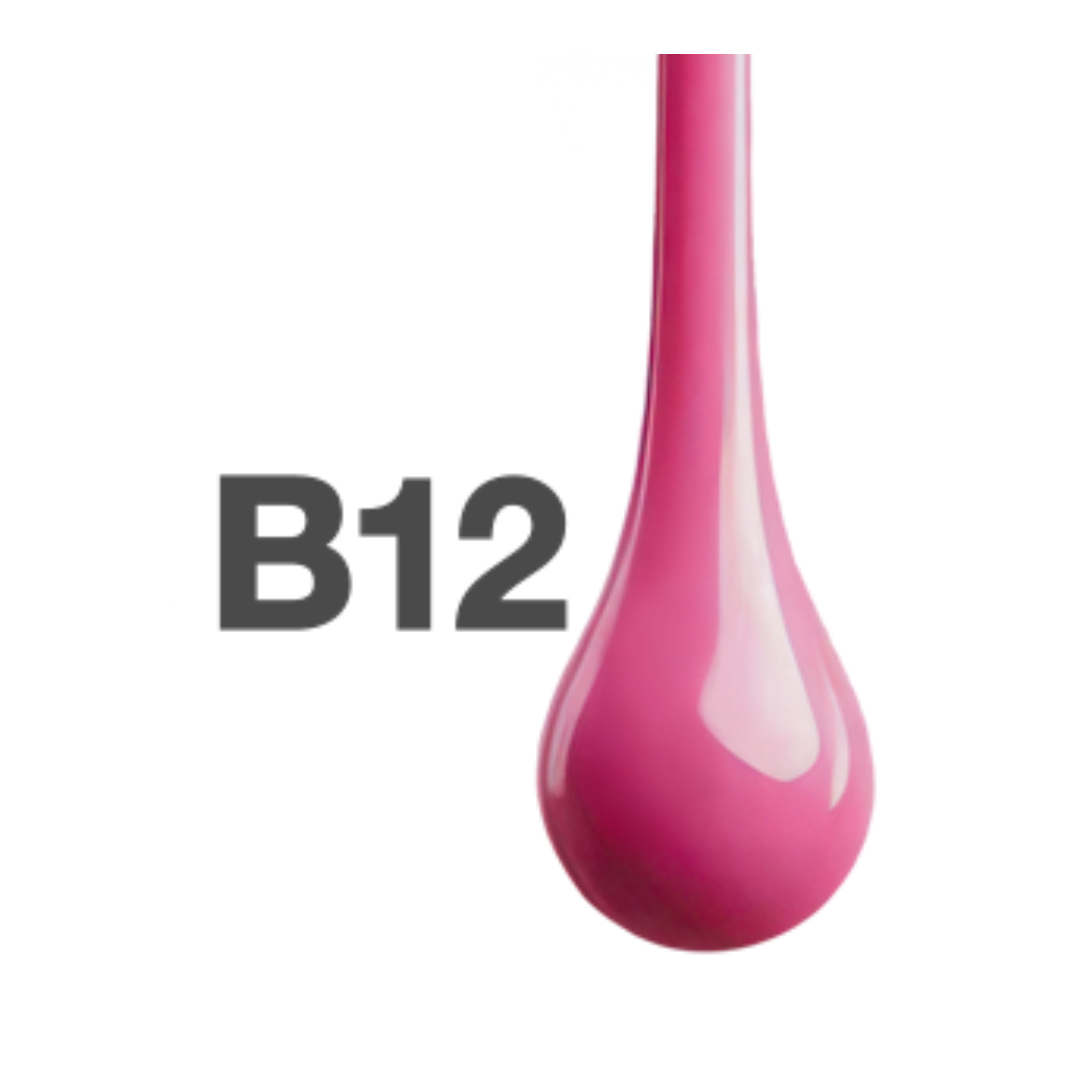Guide to Vulvodynia
Vulvodynia. It's a word that many may not have heard before. However, for many women around the world, it's a part of their daily lives.
Imagine a persistent pain or burning sensation in the most intimate area of your body. The pain affects everything from your sex life to sitting comfortably. This is the reality for those suffering from vulvodynia. Unfortunately, vulvodynia is still overlooked and misunderstood by many. But what exactly is vulvodynia? Why does it affect some women and what can be done to help them?
Dive into the guide where we explore vulvodynia, shed light on its causes and give hope to those seeking answers.
Table of contents
What is Vulvodynia?
Vulvodynia is not just a medical term, but a condition that affects many women in often very personal and painful ways. But what does it really mean?
Definition of vulvodynia
Vulvodynia is defined as chronic pain or discomfort in the vulvar region (the outer part of the female genitalia) without an identifiable cause. The pain has lasted for at least three months and is not caused by an infection, skin disease or other medical conditions.
Symptoms and signs of vulvodynia
The symptoms of vulvodynia can vary from woman to woman, but the most common include
- Constant or occasional pain.
- Burning or stinging sensation in the vulva area.
- Pain that worsens with touch, intercourse or when wearing tight clothing.
- Redness or swelling of the vulvar area (although some women don't show visible signs).
The difference between vulvodynia and other intimate pain
While vulvodynia is characterised by pain without an identifiable cause, there are other vulvar pains that can be caused by specific medical conditions.
For example, vulvitis (inflammation of the vulva) can be caused by infections, allergies or skin conditions. Additionally, vestibulodynia, a subcategory of vulvodynia, can cause pain only when touching or applying pressure in the vestibular area (the area around the vaginal opening). It's important to distinguish between the conditions to ensure proper diagnosis and treatment.
Causes of Vulvodynia
Vulvodynia is a complex condition and despite extensive research, its exact causes are still unknown. However, researchers have identified several potential factors that may contribute to the development of the painful condition.
Review of the known and potential causes
- Nerve damage or irritation: Damage or irritation to the nerves in the vulva area can lead to chronic pain.
- Genetic predisposition: Some studies suggest that women with a family history of vulvodynia may have an increased risk of developing the condition.
- Hormonal changes: Hormonal changes, such as those that occur during menstruation, pregnancy or menopause, may be associated with vulvodynia.
- Inflammation: Chronic inflammation in the vulvar area can contribute to persistent pain.
- Pelvic floor dysfunction: Weakness or tension in the pelvic floor muscles can cause or worsen vulvodynia.
- Previous infections or surgery: Previous vulvar infections or surgical procedures can leave scar tissue or other changes that lead to pain.
Discussion of research and studies on the topic
Although many of the above causes have been identified through clinical observation and patient reports, there is still much that researchers don't know about vulvodynia.
Recent studies have focused on investigating the role that central sensitisation (an increased sensitivity of the nervous system to pain) may play in vulvodynia. Other researchers are investigating how environmental factors such as diet or exposure to certain chemicals can affect the risk of developing the condition.
While progress has been made in understanding vulvodynia, there is still much to learn and continued research is essential to help the many women affected by the pain.
Diagnosis and treatment
Living with vulvodynia can be challenging, but with the right diagnosis and treatment, many women can find relief and improve their quality of life. Here we will explore how vulvodynia is diagnosed, what treatment options are available and how different care products can help, such as Australian Bodycare intimate products.
How vulvodynia is diagnosed
- Medical history: The doctor starts by reviewing the patient's medical history and experience with the pain, including its duration, location and possible triggers.
- Physical examination: A gynaecological examination is used to examine and assess the vulvar area and rule out other possible causes of the pain, such as infections or skin conditions.
- Q-tip test: This is a specific test where the doctor gently presses different areas of the vulva with a cotton swab to identify painful areas.
- Additional tests: In some cases, additional tests, such as a biopsy, may be necessary to rule out other conditions.
Available treatment options
- Medication: Antidepressants, anticonvulsants and topical anaesthetic creams may be prescribed to help relieve the pain.
- Physiotherapy: Physiotherapy, especially pelvic floor exercises, can help strengthen the pelvic floor muscles and reduce pain.
- Biofeedback: This technique teaches patients to control certain bodily functions to reduce pain.
- Nerve blocks: In severe cases, nerve blocks, where medication is injected directly into the nerves, can be an effective treatment option.
- Counselling: Psychotherapy can be beneficial for women experiencing depression or anxiety as a result of their pain.
- Alternative treatments: Acupuncture, meditation and other alternative therapies can also help some women manage their pain.
- Australian Bodycare products: These products cannot be used for treatment, but for some, they can provide relief on a daily basis. The products can be used to soothe and protect the sensitive intimate area, e.g. during everyday activities or intimacy. Read more about the products here.
Life with Vulvodynia
Vulvodynia isn't just a physical condition; it also affects women personally, emotionally and psychologically. Living with constant pain can be exhausting and affect multiple aspects of a woman's life - from her relationships to her self-image. Here, we explore the challenges that many women with vulvodynia face and offer advice on what steps to take to ease the pain.
Advice and strategies for dealing with everyday challenges
- Clothing choices: Choose loose-fitting clothing and avoid tight underwear to minimise irritation.
- Sleep: Use a pillow between your legs when sleeping. This reduces pressure on the vulva area.
- Sexual health: Communicate with your partner about your needs and boundaries. Consider using lubricants or other aids to make intercourse more comfortable.
- Daily activities: Consider using a pillow or foam ring when sitting.
Psychological and emotional aspects of living with vulvodynia
- Self-image and self-esteem: Chronic pain can affect how women view themselves. It's important to seek support and remember that you are more than your pain.
- Relationships: Vulvodynia can affect intimate relationships. Open communication with partners and loved ones is essential.
- Mental health: Many women with vulvodynia experience depression, anxiety or other mental health issues. It's important to seek help if you feel depressed or overwhelmed.
- Seek support: Consider joining a support group for women with vulvodynia. You might also consider talking to a therapist who can help you navigate the emotions that come with living with chronic pain.
Myths and misconceptions
Although vulvodynia is a condition that affects many women, there are still many misconceptions and myths associated with it. These myths can lead to stigmatisation, misdiagnosis and unnecessary suffering for those affected. In this section, we address some of the most common myths about vulvodynia and present the facts to dispel them.
Common myths about vulvodynia
1. "It's all in your head": Many women with vulvodynia have been told that their pain is purely psychological.
2. "It's caused by frequent sex or promiscuity": Some mistakenly believe that vulvodynia is a consequence of a certain sexual behaviour.
3. "It's the same as a fungal infection": Although the symptoms may resemble a vaginal fungal infection, vulvodynia is a completely different and specific pain condition.
4. "It will go away if you just relax": Many people believe that stress is the primary cause of vulvodynia and that it will go away with relaxation.
Facts about vulvodynia
1. Vulvodynia is a real medical condition: Although stress and psychological factors can exacerbate symptoms, vulvodynia is a physical condition with concrete symptoms.
2. Vulvodynia is not related to sexual activity: The condition can affect women of all ages and is not related to specific sexual activities.
3. Vulvodynia requires a specific diagnosis: it is important to consult a specialist to get the correct diagnosis and treatment.
4. Treatment requires a multifaceted approach: Relaxation alone will not cure vulvodynia. A combination of medical treatment, physiotherapy and psychological support will often be necessary.
The importance of correct information and education
Misconceptions about vulvodynia can lead to unnecessary suffering and delayed treatment. Proper information and education is essential to ensure women get the help they need and to raise awareness and understanding of the condition at a societal level.
Prevention and care
Living with vulvodynia can be a daily struggle, but there are steps you can take to prevent further discomfort and to care for the affected area. Additionally, there are resources and support groups available for those affected by the condition that can offer further guidance and support.
Tips for preventing vulvodynia
- Avoid products that make it worse: Avoid products that can irritate the vulva area, such as perfumed soaps, fabric softeners and detergents, etc.
- Wear cotton underwear: Cotton is breathable and can help reduce moisture and irritation.
- Avoid tight clothing: Tight clothing can cause friction and irritation in the vulva area.
- Keep the area clean and dry: Excessive moisture can exacerbate the symptoms of vulvodynia.
Resources and support groups for those affected by the condition
There are many organisations and support groups that offer resources, advice and support for women with vulvodynia. Joining a support group can provide a sense of community and understanding that can be vital for those living with the condition.
Care in everyday life
Australian Bodycare has developed a special care package with products based on Tea Tree Oil, which is known for its cleansing and soothing properties on the skin. The products can be used to relieve discomfort caused by vulvodynia - both in daily life and during sex.
Everyday help: Many women with vulvodynia experience discomfort during the day, especially when wearing tight-fitting clothes or if they have been sitting down for long periods of time. Australian Bodycare products can help soothe and protect the sensitive vulva area, reducing irritation and providing a feeling of freshness and comfort.
Support during sex: Intimacy can be a challenge for women with vulvodynia due to the pain that is exacerbated by touch. Products with Tea Tree Oil are designed to protect the skin, reduce friction and provide moisturisation, which can help reduce discomfort. Tea Tree Oil is known for its cleansing effect and therefore also helps to keep the intimate area healthy and balanced.
The products can usually be used for daily care and in combination with medical treatment. However, you should always consult your doctor if in doubt.
Read more about the products here.
Conclusion
Vulvodynia is a condition that affects many women, but is unfortunately often overlooked or misunderstood. Understanding and recognising vulvodynia is crucial - not only for those who suffer from it, but also for society as a whole. The condition is not "just in your head" or something you "just have to live with". It's a real medical condition that requires attention, understanding and appropriate treatment.
If you're experiencing symptoms of vulvodynia, it's important to seek help. There are resources, support groups and treatment options available that can help relieve the pain and improve quality of life. No one should feel alone or helpless when dealing with vulvodynia. With the right knowledge and support, women affected by the condition can achieve a better quality of life.
Frequently asked questions (FAQ) about Vulvodynia
How does Vulvodynia occur?
Vulvodynia is a condition characterised by chronic pain or discomfort in the vulva area without a clear cause. The exact cause of vulvodynia is still not fully understood, but it is thought to be a result of several factors, including nerve irritation, genetic factors, hormonal changes and inflammation.
What can be done for vulvodynia?
Treatment for vulvodynia varies depending on the individual's symptoms and can include medication, physiotherapy, biofeedback, nerve blocks and counselling. It's important to consult your doctor or other healthcare professional for a proper diagnosis and treatment plan.
Is vulvodynia chronic?
Yes, vulvodynia is considered a chronic pain condition. However, symptoms can vary in intensity over time and some women may experience periods of relief.
Can Botox be used in the treatment of vulvodynia?
Botox injections have been investigated as a potential treatment for vulvodynia - especially for those who have not had success with other treatment methods. Botox acts as a muscle relaxant and can therefore help reduce pain. Botox treatment should always be discussed with a doctor or specialist.
What exercises are good for vulvodynia?
Physiotherapy, including pelvic floor exercises, can be beneficial for women with vulvodynia. The exercises can help strengthen the pelvic floor muscles, improve blood flow and reduce pain.
Is there a link between vulvodynia and diet?
While there is no specific "vulvodynia diet", some women report relief from symptoms by avoiding certain foods that can irritate the bladder or cause inflammation. It may be beneficial to consult a nutritionist to discuss potential dietary changes.
Find more information here:

